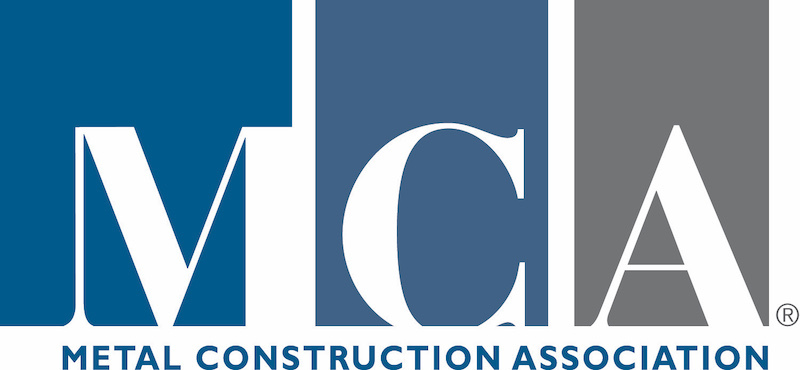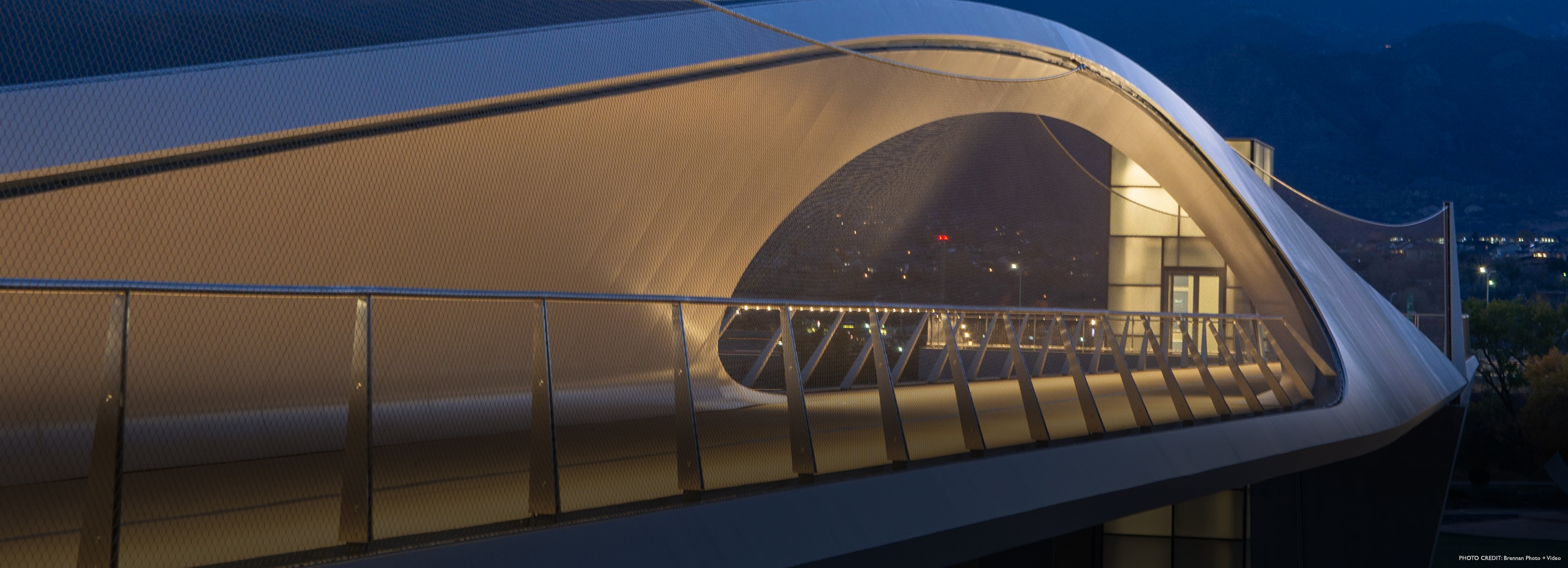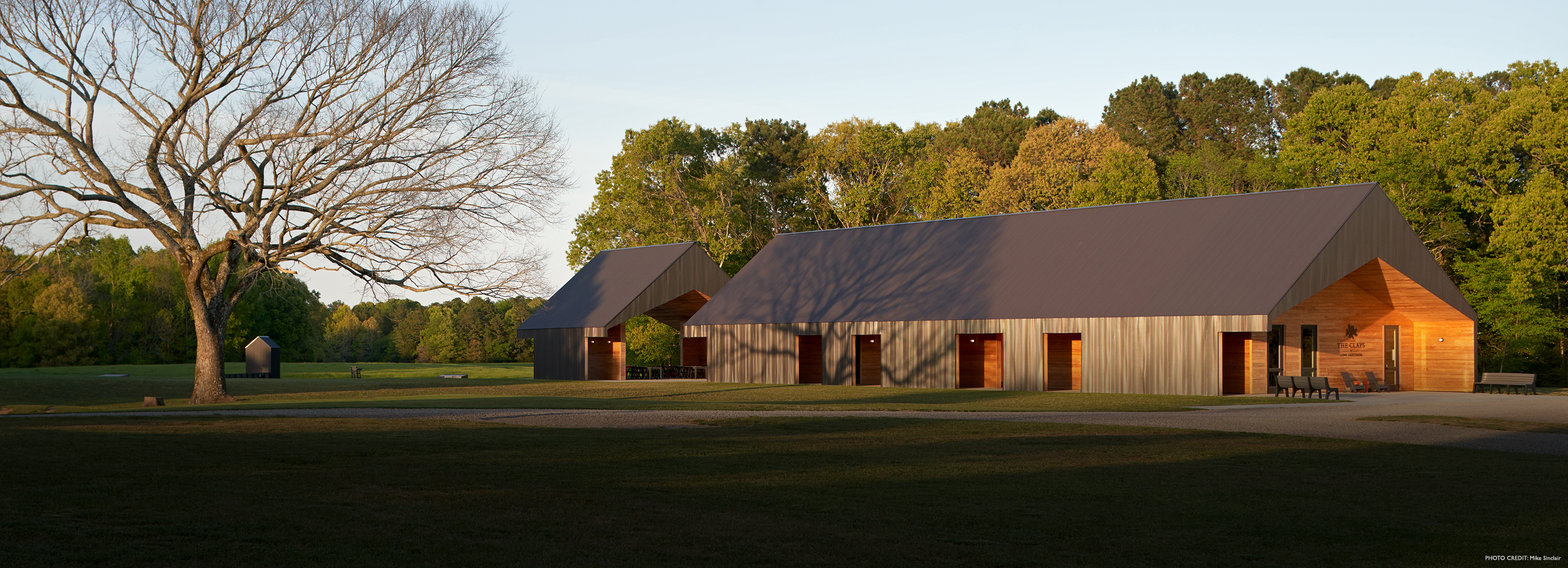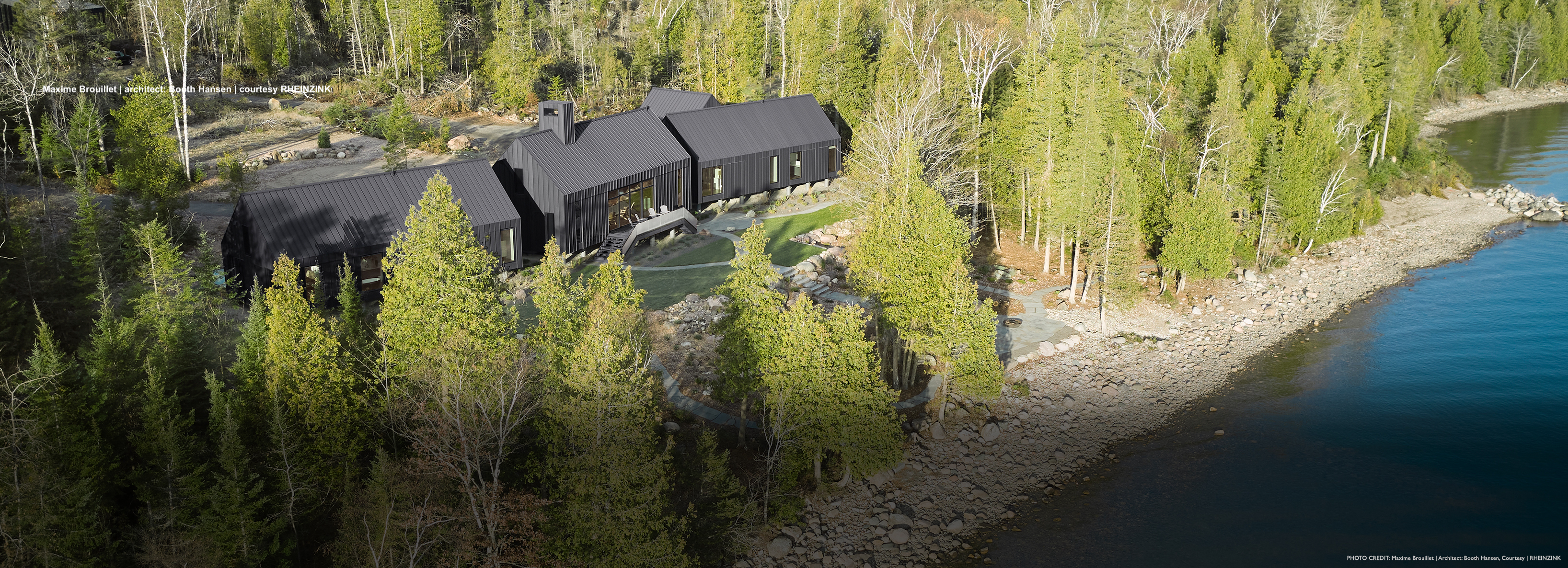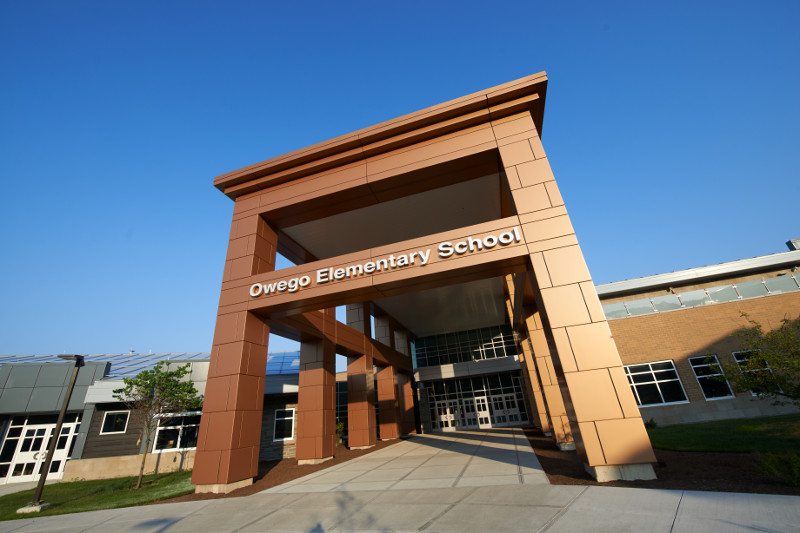After the Flood
A rebuilt elementary school stands as a symbol of resilience in a flood-ravaged village.
View Case Studies
In September 2011, Tropical Storm Lee roared into the Gulf of Mexico and wreaked havoc in states from Louisiana and Mississippi all the way up to Pennsylvania and New York. It caused severe flooding in many of those states and left deep scars on many communities in its wake.
One of those communities is the town of Owego, New York. The county seat of Tioga County, the town of just about 4,000 was hit hard by rising waters brought on by Tropical Storm Lee. The school district was hit with particular fury. Four of the district’s buildings were completely destroyed by flooding, and others were severely damaged.
When the waters receded, the village pulled together to restore its infrastructure. An important part of that restoration was rebuilding the school district. For that, they needed a great deal of help. Longtime partners of the village, the Pennsylvania-based design firm Highland Associates was among those that stepped up. Highland Associates had been working with Owego Apalachin School District on various projects since 2007.
“After Tropical Storm Lee hit and flood waters destroyed the area, Highland was called by the district to help assess the damage,” recalls David Degnon, senior associate with Highland Associates. “We were onsite within days of the initial flooding, and working hand in hand with the district, FEMA, the New York State Education Department, and the state of New York, we designed three new buildings to replace the four lost to the storm.”
One of those buildings was the community’s new elementary school. The new facility was set to be built in the same place as the original but this time would be raised above the flood plain in accordance with U.S. Federal Emergency Management Agency (FEMA) guidelines to mitigate future potential disasters. In a public bid process, Highland Associates won the opportunity to design Owego Elementary School.
Strength, Resilience, and Whimsy
This project was never going to be a mundane, cookie-cutter elementary school building. This was an opportunity to make a statement of strength and inspiration to a community determined to bounce back from hardship.
There were four major goals laid out from the beginning of this project. One was to create a space where students could feel safe and comfortable. Second was to design engaging spaces that extend learning beyond the classroom. Third was health and wellness, which meant maximizing daylighting and improving indoor air quality while chasing a LEED Silver certification from the U.S. Green Building Council. And fourth was to serve the community as a symbol of healing.
“Design elements of the new elementary school draw inspiration from Owego’s story,” Degnon explains. “It is a community strengthened by hardship through collaboration, persistence, and resolve.” The interior design features patterns with connected and interlocking pieces, representing the importance of unity. Bold, confident colors and strong shapes are offset by warm woods and organic textures to offer inspiration and a nurturing environment to students. The main corridor features sculptural ceiling panels resembling ripples on water, an architectural nod to the influence of water on the region. “It represents both the fluid motion of the element and progress,” Degnon says.
The exterior also needed to connect with the community, and metal was a clear choice to complement the surrounding structures and give Owego Elementary School its own unique look.
The design team selected multiple horizontal metal panels from CENTRIA with profiles that resemble residential siding. Sloped metal panel roofing was selected to resemble the sloped roofs of the surrounding neighborhood. “We also chose flat [Formawall®]insulated metal panels for the main entrance and at the classrooms to give the building a distinct, modern feel,” Degnon says. “The range of colors used for the metal panels were dark bronze, blue, and copper. These are all colors that occur in natural bluestone, which is another cladding material commonly used in this area.”
Color was one reason for choosing metal. Shape was another.
“Metal was chosen for the clean lines that it offers,” Degnon explains. “There are lots of bends and angles in the school. It was important to use a material that complemented the design intent and offset the rugged nature of the bluestone. There is a subtle two-story cant in the exterior walls of the classrooms. The contrast of the flat metal panel against the ribbed metal highlighted this playful feature.”
CENTRIA's MetalWrapTM insulated composite backup panel system provides thermal and moisture performance behind the bulk of the mixed-medium building envelope. The product features integral attachment systems for metal, terra cotta, brick, and other façade materials, making it the perfect solution for mixed-medium exteriors.
While in many ways Owego Elementary School was designed as a statement of strength and endurance, it does not lose sight of the fact that it is a building for children. It needed to be welcoming and have a sense of wonder and whimsy.
“When you arrive at Owego Elementary School, you are greeted by the copper-colored canopy that identifies the main entrance,” Degnon says. “We wanted this to be an identifiable element. It was important to have just the right combination of color and playfulness to appeal to the children. There is a wonderful abstractness to the canopy that could only be achieved using a metal panel.”
Community Pride
For four years after the floods brought on by Tropical Storm Lee, children in Owego had to be bussed up to an hour each way to attend schools far away from their community. On January 6, 2016, students returned to the brand new Owego Elementary School.
“I was fortunate to be in attendance that day to see their faces as they entered the building,” Degnon recalls. “Their reactions will never be forgotten. The loss of the original Owego Elementary School was a loss that was felt by the entire community. Many of the residents of the town were once students of the school and have had children or grandchildren who were attending the same school they did as a child. In a situation like this, you learn how pivotal a school is to a community. It is a sign of stability, strength, and, certainly in this case, perseverance.”
There is a great sense of pride felt from those who worked on the project and the community that calls the school its own. It’s also a reminder to anyone that the power of community is stronger than any tragedy that may come along.
“From disaster comes opportunity. The new Owego Elementary School is a state-of-the-art, 124,000-square-foot facility that will serve the community for generations,” Degnon says. “As design professionals, we learned to keep pushing the envelope of possibilities. It is our job to design spaces that evoke emotion. I’ve seen that emotion on the faces of the children who occupy the school, the faculty and staff who work in the school, and the community members who have visited the school. Highland Associates feels very fortunate to have been part of such a special project.”
LOCATION
Owego, NY
BUILDING OWNER
Owego Apalachin Elementary School
CONTRACTOR
Daniel J. Lynch Inc.
MANUFACTURER
CENTRIA
BUDGET
n.a.
SIZE
124,000 square feet
DATE COMPLETED
January 2016
